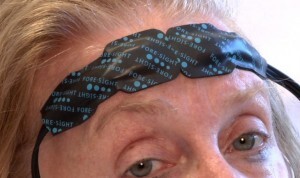Strokes and seizures are serious health hazards, especially among elderly people or those with genetic predispositions. Today however, some new inventions can help predict when those accidents might occur and help doctors and caretaker better prevent them.
Patients who have already experienced a stroke need to be monitored very closely as about a third of them experience another one in the following days or weeks. However, there are very few visible warning signs that a stroke may occur and doctors and nurses so far have had to rely on invasive tests and procedures to monitor their patients reliably.
The Mayo Clinic in Florida is now pioneering a headband that uses infrared detectors to monitor intracranial blood pressure in real time. Its operating principle is similar to the various pulse oximeters that clamp to your finger. The infrared light penetrates a few millimeters under your skin and allows dedicated sensors to detect and analyze the blood flow. The headband however offers fewer measurements than traditional scans, which limits its usefulness in some cases. Still, it remains far cheaper and easier to put in action that the other solutions currently available.

Seizures are often scary experiences for the person who suffers from them as well as their loved ones and often result in the need for medical attention. However, some new devices can now help manage them.
The SmartWatch, for instance, detects repetitive arm motions consistent with seizure symptoms and will send an alert to the wearer’s caregivers or family members using their Android phone as a relay. The alarm can be triggered either by the wearer’s initiative or automatically, if the abnormal movements persist for more than a few seconds. The watch also keeps a record of every incident (time, duration, location) for later analysis.
For patients who suffer from epileptic seizures, MIT scientists have developed a wristband that is able to assess the severity of the seizures with the same accuracy as an electroencephalograph (EEG) system using measures of the electrical conductance of the skin (a factor that is closely linked to the state of the nervous system). This kind of measurements are very valuable because they help patient assess whether or not they need medical attention after an episode as well as record data to monitor their condition overall. By analyzing many epileptic episodes, researchers have also made some discoveries that may allow them in the near-future to predict certain seizures a few moments before they occur.

Smart devices will probably never offer a complete solution for patients to recover from strokes and seizures, nor will they “cure” those conditions. However, using sensors and data gathered from hundreds or thousands of patients may help researchers predict more accurately when an episode might occur, call for help automatically and help caregivers make better diagnostics by recording more symptoms.
How smart technology can help against strokes and seizures
July 12, 2012


